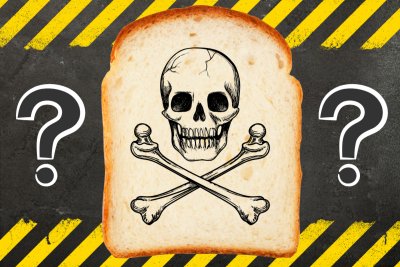 Recipe for Change taste testers. Copyright: Rod Main | Recipe for Change
Recipe for Change taste testers. Copyright: Rod Main | Recipe for Change

“They literally taste the same!” – so why is our food still flooded with sugar and salt?
A group of teens put popular snacks to the test – could they taste the difference between high and low sugar or salt? What they found shines a light on the role the food industry needs to play in creating a healthier future.
Young people want to eat well. But when supermarket shelves are packed with foods overloaded with sugar and salt, and marketing practices target young people incessantly, choosing healthy options isn’t just difficult, it’s stacked against us. So, the Recipe for Change campaign brought together a group of young people for a taste test with a twist. We wanted to know: could they tell the difference between high- and low-salt or sugar snacks? And what would they choose if given better options?
The experiment: sweet, salty… or just right?
From crisps to popcorn, cake to biscuits, and even a few savoury nuts, our taste test lineup featured popular snacks with a range of sugar and salt. The results? Surprising, even to the participants.
In most cases, there were healthier versions that barely differed in taste from the highest sugar or salt options. Some were even preferred. As one young tester exclaimed about the lemon cakes, “They literally taste the same to me, I’m not gonna lie.” Another added about the sweet and salty popcorn, “These two tasted the same – I thought it was a trick question!”. Yet one of those popcorns had almost double the salt (as well as more sugar!).
And when we revealed just how much sugar was in the high-sugar biscuits, the reactions said it all. “That’s just too much sugar, 15g – that’s crazy!”.
Young people don’t sugar-coat the truth
The young people in the room came ready to talk, and they didn’t hold back. They told us they feel bombarded by unhealthy food options every time they shop, and that big food companies need to do better. When nearly identical products have drastically different sugar and salt contents, it begs the question: why aren’t all companies choosing the healthier path?
Our recent report, Incentivising Reformulation, uncovered just that. We found massive variations in salt and sugar levels across similar products - clear proof that food companies can make healthier recipes. But most aren’t bothering, because there’s no incentive for them to change.
The case for a manufacturer levy on unhealthy food
That’s where the idea of a government levy comes in – food companies need to be held accountable for the food they sell us. A levy on food products high in sugar and salt would incentivise companies to reduce these ingredients to avoid paying – something we’ve seen they can clearly do while still keeping customers happy with the taste. Any companies who choose not to change their recipes would instead pay the levy and we want this revenue to go towards funding children’s health programmes and access to good food. You can see our full menu of recommendations here.
The young participants in our taste test were behind a levy, "I think the levy would be a helpful thing, because it would force companies to reduce the sugar and salt levels that they have in their foods". They see that companies need a push to do the right thing. Right now, profits are taking priority over people’s health.
In fact, some participants even shifted their own preferences once they knew what was in their snacks. “I’d probably buy [the medium sugar biscuit] – it tastes similar but has less sugar,” one said.
What needs to change
This experiment gave us a clear message:
- Young people want to eat better - but it shouldn’t be so hard.
- They often prefer snacks with less salt and sugar.
- Food companies can do better, and they should.
If some companies can make lower-sugar, lower-salt snacks that taste just as good, all of them can. But they won’t until there’s a financial reason to act. That’s why Recipe for Change is calling for a levy to help tip the balance.
The taste test proved it: the healthier option can still be the tastier one. Now we just need the food industry to catch up.
Watch the full taste test video here
Want to see the evidence? Read our report: Incentivising Reformulation
And join the call for a manufacturer levy on unhealthy food. It’s time for a #RecipeForChange.
Recipe for Change collaborated We Rise, a youth organisation skilled in engaging young people, to carry out our taste test experiment.
Children's Food Campaign: Campaigning for policy changes so that all children can easily eat sustainable and healthy food.
Sustain
The Green House
244-254 Cambridge Heath Road
London E2 9DA
020 3559 6777
sustain@sustainweb.org
Sustain advocates food and agriculture policies and practices that enhance the health and welfare of people and animals, improve the working and living environment, promote equity and enrich society and culture.
© Sustain 2025
Registered charity (no. 1018643)
Data privacy & cookies
Icons by Icons8







